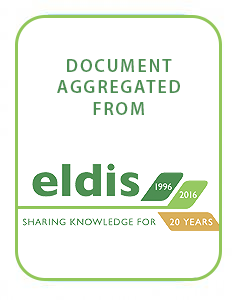Resource information
This thesis, is based on the follwing legs of argument, as follows:
The pastoral human population is growing at about 2.5% per year
A certain minimum number of livestock are needed to support these humans as pastoralists, even at very low levels of welfare.
The maximum total pastoral herd size is limited by the amount of livestock feed available. Where numbers temporarily exceed this limit they soon die back.
In pastoral areas where Leg 4 of the argument is not yet the case, nevertheless widespread unbearable poverty already prevails because the total livestock herd is not equitably distributed between households.
The area of land accessible for pastoral use can not be significantly increased, e.g. by water development, and is in fact shrinking, as a result of the expansion of cultivation and of wildlife conservation areas.
There are no known technologies for significantly increasing primary range production, thereby permitting a larger aggregate herd size.
Overall herd productivity can not substantially improve unless the quantity and quality of feed is improved.
The patches of rain-fed cultivation which pepper the rangelands of GHA are, at present, technically, environmentally and economically inefficient.
The market prospects are not very favourable for increasing the unit value of pastoralists’ livestock
The prospects for other kinds of income diversification within the pastoral areas are unfavourable
The implications of this thesis are that a solution to the fundamental imbalance needs to be found in a combination of the following strategies:
The emigration of a substantial proportion of pastoralists from both substantial dependence on livestock and from pastoral areas.
The development, within or near pastoral areas, of more productive and more sustainable rain-fed or irrigated crop-agriculture into which previous pastoralists can switch their livelihoods;
The development of diversified income-earning opportunities not dependent on demand from within pastoral areas (e.g. in the production and gathering of “pharmaceutical” 3 products).
Reducing/reversing/ population growth.
A much greater (and more successful than hitherto) emphasis on improving range (the per hectare, primary, edible) productivity, thereby allowing more livestock to be kept, coupled with enhanced efforts to increase animal productivity.
A program to obtain higher prices for pastoralists’ livestock products by reform of the internal marketing system, and/or by “market development” (reaching new markets requiring higher quality and higher price products) or by a price stabilization scheme.
Additional (to the above) policy reforms (including land tenure) to facilitate the above.



